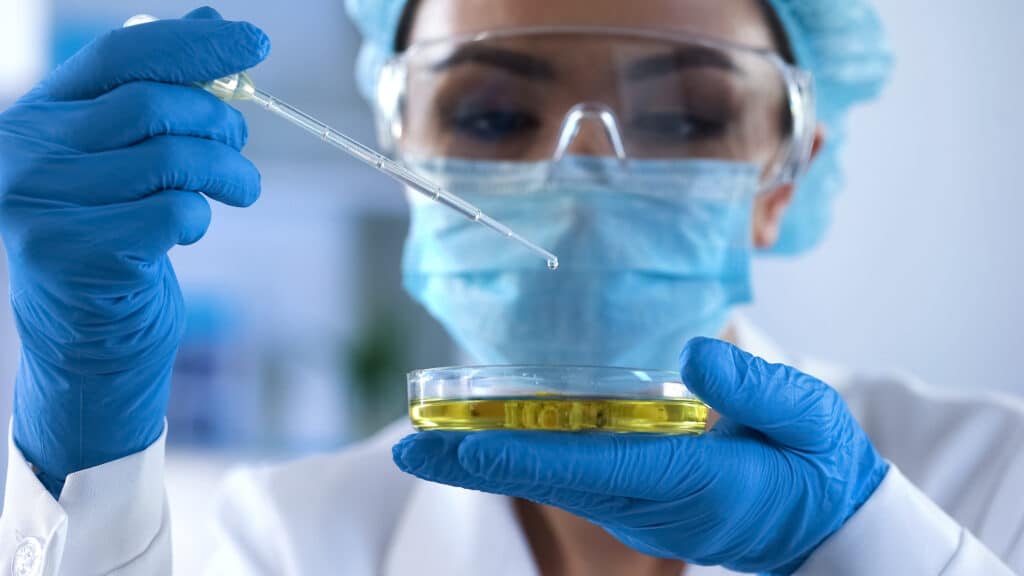Our Microbial Limit Testing Capabilities
CPT performs microbial limit testing along USP <61> and <62> compendial methods, which provide directives for Microbial Enumeration Suitability and Testing for Specified Organisms, respectively. Microbial Enumeration Tests determine the total number of aerobic organisms, yeast, and mold in a product, while Tests for Specified Microorganisms identify the presence or absence of specific intolerable organisms. These chapters have been harmonized for US, European, British, and Japanese markets.
Microbiological quality acceptance criteria for non-sterile products depends on how the product is used (i.e., route of administration) and the nature of the product itself.
| Tests | US Pharmacopoeia (USP) | European Pharmacopoeia (EP) | British Pharmacopoeia (BP) | Japanese Pharmacopoeia (JP) |
| Examination of Non-Sterile products: Microbial Enumeration Test (MET) | USP<61> | EP chapter 2.6.12 | BP chapter B2 | Japanese Pharmacopoeia XV 1st Supplement |
| Examination of Non-Sterile Products: Tests for Specified Microorganisms | USP<62> | EP chapter 2.6.13 | BP chapter B1 | Japanese Pharmacopoeia XV 1st supplement |
Typical Analytical Flow for Microbial Limit Testing
1. MLT Method Suitability Test
Before Microbial Limit Testing may be performed, the method must first be validated to ensure that the tests used are able to detect microorganisms in the product itself and that product doesn’t have inherent antimicrobial properties which could encourage false negatives. If antimicrobial activity is detected in a product, neutralization agents must be added to assess microbial bioburden in subsequent tests. (If the detected antimicrobial activity cannot be neutralized, the inhibited microorganism is assumed to not be present in the product.) Suitability testing should be repeated if there is a change in the product formulation that could interfere with test outcome.
Suitability testing has three phases: Growth Promotion, Suitability of the Counting Method (Validation), and Suitability Tests for Specified Microorganisms (Validation). If the product inhibits microbial growth, the antimicrobial component(s) in the product must be neutralized before proceeding to Enumeration and Specific Organism analyses.
| Interfering Substance | Potential Neutralizing Agents/Methods |
| Glutaraldehyde, mercurials | Sodium hydrogen sulfite (Sodium bisulfite) |
| Phenolics, alcohol, aldehydes, sorbate | Dilution |
| Aldehydes | Glycine |
| Quaternary ammonium compounds (QACs), parahydroxybenzoates (parabens), bisbiguanides | Lecithin |
| QACs, iodine, parabens | Polysorbate |
| Mercurials | Thioglycollate |
| Mercurials, halogens, aldehydes | Thiosulfate |
| EDTA (edetate) | Mg ions, Ca ions |
2. Microbial Enumeration (Total Aerobic Microbial Count and Total Combined Yeasts and Mold Count)
Product classification dictates the choice of the particular microbial enumeration test and acceptance criteria used to determine microbial quality. Following a defined incubation period, estimated microbial bioburden is determined by quantification of colony-forming units (cfu).
There are 3 compendial methods for quantifying product microbial content:
- Membrane Filtrationuses filtration apparatus to isolate microbial populations for total aerobic microbial count and total combined yeasts and mold count. One membrane filter is used for each microorganism species to be quantified.
- Total Plate-Count Method (TPC)involves direct plating of microbial populations for enumeration.
- Most-Probable-Number (MPN) Methodis reserved for quantification of total aerobic microbial count when other methods are not available. The MPN method is not as precise or accurate as the Membrane Filtration and TPC methods and is particularly not suitable for mold enumeration. If justified, however, MPN can be the most appropriate approach for very low bioburden products
3. Screening Test for Specified Microorganisms
As with Microbial Enumeration tests, screening for specified microorganisms requires a preliminary suitability analysis and, if required, inclusion of a neutralization agent prior to testing. Here, product samples are streaked onto selective agar plates to determine the presence or absence of certain undesirable microorganisms.
The following microorganisms are screened for over the course of this test:
- Bile tolerant, gram-negative bacteria
- Escherichia coli
- Salmonella
- Pseudomonas aeruginosa
- Staphylococcus aureus
- Clostridia
- Candida albicans
With over 40 years of experience consumer product testing and regulatory compliance, CPT Labs is well-positioned to be an extension of your Quality Assurance team. With regard to Microbial Limits testing, our Microbiology Division offers expertise across multiple industries including pharmaceuticals, OTC drugs, consumer healthcare products, cosmetic and personal care products, specialty chemical, and medical device industries. Our seasoned professionals are well-versed in technical knowledge associated with the FDA, EPA, and international consumer product regulations. All testing is accurately and appropriately conducted according to compendial and validated standards. We aim to best suit our clients’ needs and strongly adhere to Good Laboratory Practices (GLP), GMP, and Good Clinical Practices (GCP) standards. Custom-tailored testing programs and flexible turn-around times are available. Contact us at your earliest convenience.


